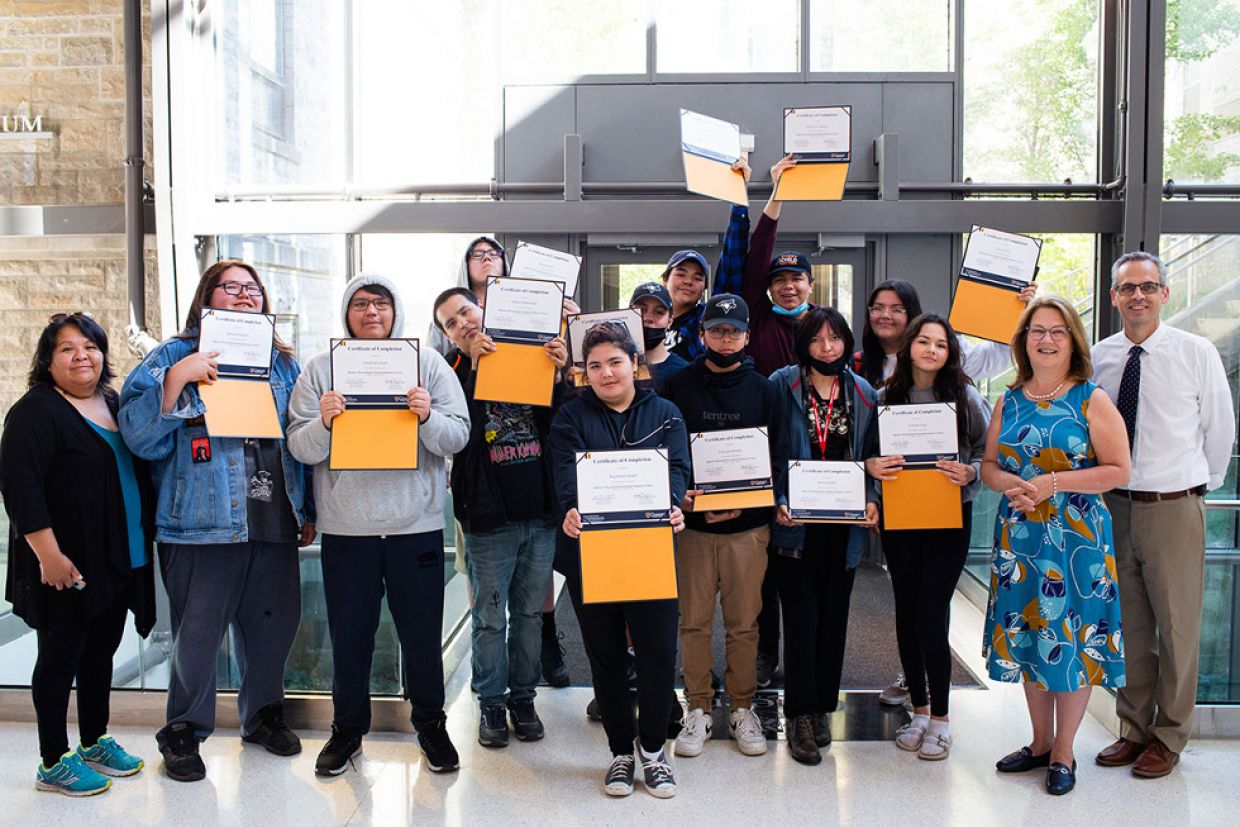Queen’s Family Medicine resident Dr. Cathie Moran is delivering quality health care to communities that have been historically underserved and mistreated. She is Métis from Sioux Lookout, Ont., and has spent many weeks in Moose Factory on the James Bay coast, training and providing health care to the Cree people of Mushkegowuk Territory.
“We need to give back strength and autonomy to Indigenous peoples,” says Dr. Moran. “And we need to be careful about presenting ideas of what we think is best for their care. It’s what they think is best. We need to tread carefully and listen.”
Dr. Moran applied for the opportunity to train and learn in Moose Factory through Queen’s longstanding partnership with the Weeneebayko Area Health Authority (WAHA), the local health network encompassing several hospitals and nursing stations in Attawapiskat, Fort Albany, Kashechewan, Moosonee, Moose Factory, and Peawanuck. Dr. Moran spent five weeks as a medical student and eight weeks last summer as a resident in Moose Factory.
Through the current partnership, Queen’s Health Sciences (QHS) and the Kingston Health Sciences Centre (KHSC) provide clinical support services, delivering care in-person in Kingston, by telemedicine, and by sending specialists to the Weeneebayko region. That longstanding collaboration has provided vital training opportunities and patient care and laid the groundwork for a groundbreaking new program launching in 2025, the Queen’s Weeneebayko Health Education Program.
WAHA and QHS, with the support of the Mastercard Foundation, are co-developing a university curriculum for health professions training to be delivered in the region. The initiative aims to address health-care challenges facing remote Indigenous communities, including low accessibility to providers and facilities, the need for cultural safety, health outcome gaps, and underrepresentation of Indigenous peoples among health professionals.
“We are growing our vision for how we can effect change, and this program will create new pathways for education and improve our own cultural safety,” says Dr. David Taylor, Senior Advisor, Queen’s—WAHA Partnership and Associate Professor, Department of Medicine. “We are not just health-care agents. We are partners in reconciliation.”
That partnership had deep roots.
Queen’s School of Medicine began providing care to people in the WAHA region in 1965, when the Department of Paediatrics ran the first clinics in Moose Factory and identified the need for a comprehensive program to support health care in the area. Called the Queen’s Moose Factory Program at the time, the initiative linked Kingston General Hospital as the foundational hospital partner providing specialized and tertiary care. Queen’s School of Nursing also developed its own program to support health care, research, and education in the region.
The program has grown substantially over the years. In 1980, a charter flight to Moose Factory was introduced to facilitate patient transport to and from Kingston, as well as specialist transport to Moose Factory for in-community clinical services. Daily flights are now offered during the week. Clinical engineering support services to repair hospital equipment have been offered since the 1990s.
For Indigenous patients coming to Kingston, comprehensive and culturally appropriate care is critical, which prompted the creation of Ininew Patient Services (formerly Native Patient Services) in the early 1980s. It coordinates clinical appointments, lodging, and translation services in Kingston, and arranges health care and services in the WAHA region. This patient services program is unique within Ontario and Canada – it is the only hospital-based centralized appointment and support service program for northern Indigenous persons accessing out-of-community health care.
Dr. Graeme Smith, Head of Obstetrics and Gynaecology in the School of Medicine, has been traveling to Moose Factory to offer gynaecology clinics for many years. The program is incredibly important, he says, keeping patients in their own community for care whenever possible and providing care in Kingston when needed, as is the case for high-risk pregnancies. Nurses from Moose Factory also take refresher training with KHSC nurses in Kingston to boost their obstetrical nursing skills and build hospital connections.
The program has offered invaluable learning opportunities to physicians and other practitioners visiting the Weeneebayko region. “It has afforded all of us better understanding of our patients, and what the resources are in these communities,” says Dr. Taylor.
Dr. Michael Green, head of the Department of Family Medicine, says the longstanding partnership has provided a unique, vital training ground for students and health professionals – one that will only expand with local access to university health education.
Shalisa Barton, NSc’21, a nurse practitioner working in Moose Factory, says the program will have a major impact on local youth entering the health professions. “It's a huge leap to go from a local high school to university somewhere over 500 kilometres or more away from home.”
Their thoughts are echoed by Lynne Innes, CEO and President of WAHA. “The vision behind this program is to build an education hub and training facility in our region … It will provide Indigenous youth the opportunity to stay at home and learn and grow with the appropriate support systems in place.”
The new program – and its future graduates – will complement the long-standing clinical service relationship already in place in Weeneebayko. At present, QHS and KHSC services include a dialysis unit and chronic kidney disease program, obstetrics program, in-person, telemedicine, and on-call coverage across nearly all specialities, and consulting services in audiology, cardiology, colposcopy, developmental paediatrics, electromyography studies, endocrinology, internal medicine, nephrology, neurology, orthopaedic surgery, paediatric cardiology, rheumatology, urogynecology, and urology.
But the long-term vison is much more ambitious.
“The ivory tower has historically tried to keep itself as the hub, with spokes reaching out from the centre,” says Dr. Taylor. “When Queen’s switches gears and stops acting as the hub, the repositioning will begin and allow for greater health transformation within communities. That is the vision.”
For the Mastercard Foundation, it’s about shifting the way training and care are delivered to improve health outcomes in Indigenous communities, and creating new opportunities for Indigenous youth in the region and beyond. The partnership supports new, transformative approaches to healthcare design and delivery.
"It’s about taking an interdisciplinary, collaborative approach, and integrating Indigenous knowledge to create a healthcare system that people trust and that speaks to them,” says Reeta Roy, President and Chief Executive Officer at the Mastercard Foundation.
With a population of 12,000, and an average of only 1.5 physicians per 1,000 people in northeastern Ontario, the new program could be a gamechanger. From onsite pediatric clinics in 1965 to providing local youth with health sciences training in their own communities, the Queen’s-Weeneebayko partnership is entering an exciting and transformative new phase.


